Ryan Hall's Blog, page 130
September 14, 2017
Sitting Too Long Can Lead To Early Death, Even For Runners

Photo: Shutterstock.com
A new study has found that sedentary behavior, such as sitting for long periods of time, is a risk factor for early death. Even more alarming, researchers found that regular exercise did not decrease that risk of death.
Researchers spent an average of four years tracking the activity of 8,000 participants, aged 45 and older. They found that as total sedentary time increased, so did the risk of death, regardless of age, gender, race, body mass index or exercise habits. The good news is that participants who sat for less than 30 minutes at a time had the lowest risk of early death.
What does this mean for runners?
Many runners think that their exercise routines are enough to negate other unhealthy lifestyle behaviors. However, the study shows that despite activity levels, anyone who sits for long periods of time at work or home is at risk. Running at the beginning or end of the day doesn’t help if the rest of the day is spent sedentary.
“Sit less, move more, and move frequently. I think that is the simple message,” says Keith Diaz, lead author on the study and assistant professor of behavioral medicine at Columbia University Medical Center. “Exercise alone does not appear to overcome the harmful effects of sitting. So runners should be mindful that beyond getting their runs in, they should also be moving frequently throughout their day.”
Younger runners should not dismiss these findings either. Even though the study participants were middle aged and older, Diaz believes that sitting can also affect the health of younger adults.
“Although our study cannot prove this, we think that all age groups could benefit from moving throughout the day.”
How runners can move more
Implementing lifestyle changes that allow for more movement does not have to be difficult, even for runners confided to an office.
“Instead of typing an email to a co-worker, walk to their desk,” suggests Diaz. “Use a small water bottle or cup that requires you to take more frequent trips to the water cooler. Have walking meetings instead of sitting meetings when possible.”
Runners can also add to their fitness with each break. Try short bursts of body weight exercises throughout the day. Lunges, squats and calf raises are easy to do, even in work clothes. Dynamic stretches or easy yoga poses can keep muscles loose. Even just walking up and down a flight of stairs can break up a sedentary day.
Frequent movement should become a runner’s priority. Plan these breaks just as you would plan a run. Put a reminder in your daily to-do list or set calendar alerts.
Diaz suggests taking movement breaks every 30 minutes to those who find themselves sitting for long periods of time.
“We think this one behavior change could reduce the harmful consequences of sitting.”
RELATED: 8 Ways To Be Healthier Without Taking A Lunch Run
The post Sitting Too Long Can Lead To Early Death, Even For Runners appeared first on Competitor.com.
Tatyana McFadden Returns To Chicago Marathon To Defend Title
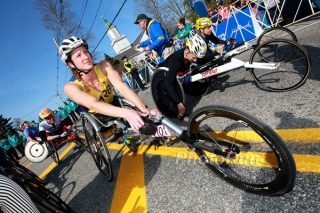
Photo: photorun.net
Seven-time champion Tatyana McFadden will return to the Bank of America Chicago Marathon to defend her title. She will be leading a competitive wheelchair field for this year’s event.
McFadden is a five-time world champion and four-time Paralympian. She holds the Chicago Marathon course record of 1:41:10. In 2013, 2014, 2015 and 2016, McFadden won four Abbott World Marathon Major races in one year: London, Boston, Chicago and New York City.
This year, McFadden competed in the Boston Marathon, despite having surgery for blood clots only weeks before. Despite a new personal best, she finished in a disappointing fourth place. However, McFadden returned to the track this summer, winning four gold medals at the 2017 World Para Athletics Championships in London.
“Tatyana became the most decorated champion in Chicago Marathon history last fall. When she comes to Chicago to race, people understand that they are watching one of the greatest champions in sport perform,” said Chicago Marathon Executive Race Director Carey Pinkowski.
Also in the woman’s wheelchair field are Manuela Schär (SUI) and Amanda McGrory (USA). Schär has won this year’s Boston Marathon, setting a new personal and world best time. McGrory, a three-time Chicago Marathon champion, was runner-up in Boston. Combined, McFadden and McGrory have won every Chicago Marathon since 2007.
The Bank of America Chicago Marathon takes place on Sunday, Oct. 8.
RELATED: Americans Hasay And Rupp Will Race Chicago Marathon
The post Tatyana McFadden Returns To Chicago Marathon To Defend Title appeared first on Competitor.com.
The Three Most Important Running Shoe Terms To Know
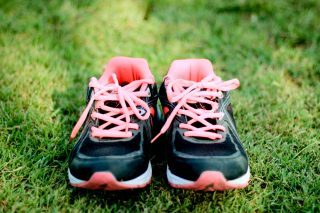
Those dedicated and understanding footwear salespeople really want to help you find the best shoe. But it may seem as if they are talking another language. Here are some key terms and explanations that will help you talk the talk to better run the run, so to speak.
Neutral or Motion Control
The Basics: Pronation is a natural part of a runner’s gait cycle, but for some that motion is more pronounced and causes instability, leading to repetitive motion injuries, especially in the knees. A shoe can have motion control or be “neutral” to allow you to go through your natural gait cycle uninfluenced.
History Lesson: Stability shoes of the past were blocky and forced the foot’s cycle. The modern approach is a less intrusive, gentler and suggestive technique.
Extra Credit: Motion control, also known as stability shoes, uses various strategic mechanical devices like posts, plastic or midsole zone construction to minimize the foot’s lateral movement.
RELATED: The Secret To Pairing Your Training Shoes And Racing Shoes
Midsole
The Basics: This section between the outsole (which is the tread part that comes in contact with the ground) and insole (which is the liner on which your feet rest) is where the magic happens. It is where all the cushioning, protection, rebound and dampening occurs.
History Lesson: Midsoles have been made from ethylene vinyl acetate (EVA) and/or polyurethane (PU). EVA tends to be light and flexible, but loses those qualities faster than PU, which is heavier, firmer and more durable. Shoe companies vary the EVA densities and hardness—which is called “durometer”—and mix in PU and a compression molding process to extend the midsole life. Now encapsulated foam technologies (like in the Adidas Boost) allow for even more midsole variations.
Extra Credit: Manufacturers also place air, gel and other cushioning units as well as new support and motion-control technologies in the insole.
Drop
The Basics: This is the height differential, measured in millimeters, between the shoe’s heel and forefoot.
History Lesson: It used to be standard to find 9–12mm offsets, but thanks to the “minimalist” movement, the norm these days is closer to 6–8mm, but some shoes are “zero drop”—closest to the angle of being barefoot.
Extra Credit: The total measure of the thickness, or “stack height,” may include the outsole and insole, but it will always encompass the midsole.
RELATED: What To Do When Your Running Shoe Is Discontinued
The ‘Last’ Word
Shoes are built around a mold, or last. The old industry standard was a men’s size 9 and then other shoes, including women’s, were built by scaling up and down. But it is worth noting that companies are— finally!—taking an approach that is more gender-specific. ASICS makes men’s and women’s lasts and Altra makes a different mold for every single shoe.
Once carved from wood, lasts have evolved dramatically over the years—and so has the science behind them. Materials now include metals and plastics, and with engineered woven uppers, pre-formed construction and 3D printing leading the way, lasts could quickly become things of the past.
The post The Three Most Important Running Shoe Terms To Know appeared first on Competitor.com.
September 13, 2017
You’ve Got To See These Running-Themed Gender Reveals
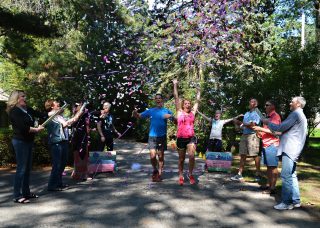
Courtesy of Sasha Wolff

Gender reveals are a growing trend, with expectant parents learning the gender of their child as excited friends and family look on with bated breaths. Though the usual reveals involve a box of balloons, cake filled with food coloring and cans of silly string, runners are starting to get even more creative with their big day.
Sasha Wolff and her husband, for example, decided to cross their first finish line into parenthood with their gender reveal, complete with confetti cannons set off by their cheer squad.
“It was actually my husband’s idea! He knew he wanted to do something cool, but nothing really spoke to him (or to us as a couple),” Wolff shared with us. “With us both being huge runners, it seemed only natural to do a running reveal! We really liked the idea of doing a finish line, since we could then include all of our parents in the reveal this way. The six people with the confetti cannons are Greg’s parents and stepparents and my own parents. They’ve been such huge role models for us in our lives, that this seemed like a great idea to include them in the fun.”
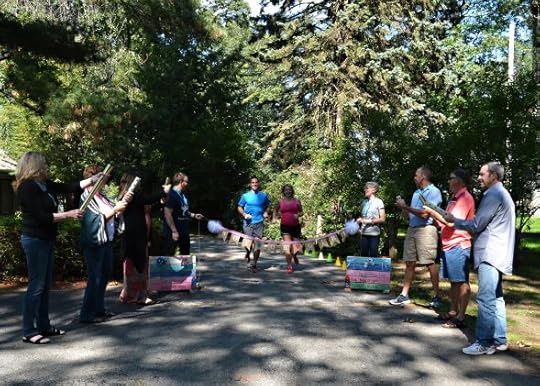
The hardest part of the reveal was actually finding out the gender and it came down to the wire! Five days before the reveal, their baby cooperated and revealed…it’s a girl!
“In terms of execution, I think the most difficult part was that baby didn’t want to cooperate! We went in for an ultrasound 3 weeks before the planned party, but baby wasn’t feeling it,” Wolff explained. “Luckily, our OB was willing to do another ultrasound 5 days before our party to see if we could get baby to share their gender. Thankfully, SHE did! My lovely sister-in-laws, Amy and Christy, took the reigns from there.”
The Wolff’s aren’t the only couple to do a running-themed reveal; one marathoning couple chose to do their reveal at the finish line of the Via Marathon in Easton, Penn. Thanks to the help of race officials and spectators, Brian and Alysha Flynn were greeted at the finish line with bunches of blue balloons to reveal they were having a boy.
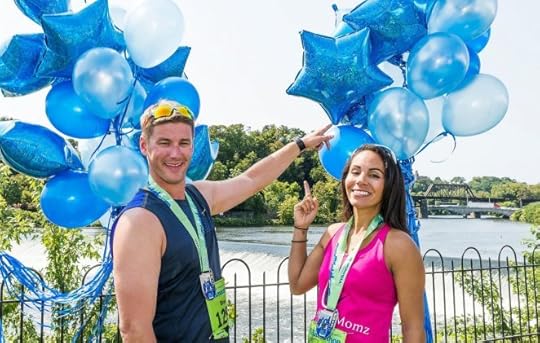
According to Runner’s World, “They signed up for the race in April. In May, Flynn learned she is expecting, and she figured she’d share the baby’s gender with her team when it was over,” the website reported. “But a friend encouraged her to tell race officials about her plans—and let other runners and spectators know about the good news.”
Both Wolff and Flynn are no strangers to running while pregnant, and though this is Wolff’s first child, she has set the goal to run a race through every month of pregnancy.
“So far during pregnancy, I’ve done a half marathon, 10-miler, 25K and a handful of 5Ks,” Wolff shared. “Coming up this weekend is another 10-mile race. October will have a 10K, November will have an 8K Turkey Trot and December will be a 5K Ugly Sweater Run. Then, I’m due Jan. 7. Even with being pregnant, I’ve managed to nab a few PRs along the way, which has been fun.”
Both runners emphasize to listen to your body. If you are tired, nauseous or sick, don’t push yourself to train. The ultimate end goal is a healthy baby and to make sure you stay healthy yourself, so learn to give yourself a break when needed and be extra kind to yourself.
“If you do want to race and train while pregnant, you’ve got to give yourself a little grace. You will get slower and running will get a bit more difficult, but there’s nothing wrong with that,” Wolff concludes. “You’re still getting out there. Your body is changing in such an amazing way and it will have an effect on your running, but once that baby is born you can work toward your old training ways.”
RELATED: 6 Time-Saving Tips For Busy Mother Runners
The post You’ve Got To See These Running-Themed Gender Reveals appeared first on Competitor.com.
The Truth Behind 10 Running Myths
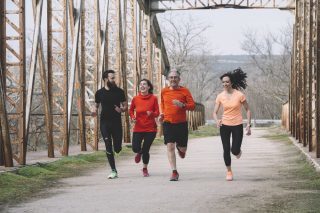
Running is a pretty simple sport. Lace up a pair of running shoes and head out the door. But peel back the layers, and you’ll find many myths and misconceptions about the sport.
What’s true and what’s false? We take a look at 10 common running myths.
Running will ruin your knees.
I’ve heard every iteration of this myth, especially from my mother. After two knee surgeries, I can understand why she might be concerned. But should she be? The short answer is no. Knee pain associated with running is most often caused by muscle imbalance and weakness, not running itself. She should be worried if I don’t perform my physical therapy exercises religiously!
You should stretch before you run.
The old way of thinking was that since runners are notoriously inflexible, they need to stretch and warm up their muscles before running. While scientists have gone back and forth on this issue, the general consensus is that static stretching is not the best way to start your run. Instead, get your blood flowing and warm up your muscles with dynamic stretches. They help to elongate your muscles and increase range of motion through movement. Think high knees, butt kicks and leg swings.
RELATED: Why You Should Stretch After Your Run And Not Before
Runners don’t walk.
Well, actually, they do. In fact, Olympian Jeff Galloway has created a whole training methodology that incorporates walking breaks. He believes that mixing regular walking breaks into your runs, will help reduce the incidence of injury and help you stay active longer.
You’re not a runner unless you run this pace (or distance).
False. If you run, you’re a runner. You don’t need to run a 7-minute mile or a marathon in order to call yourself a runner. Distance or pace doesn’t define who is and who isn’t a runner.
You’re not a runner unless you have this body type.
False again. People of all ages, shapes and sizes are runners. Just go to your next local race. You are guaranteed to see someone who looks just like you.
You’re not a runner unless you race.
If you run, it means that you’re training for a race, right? Why else would you lace up your shoes day in and day out? The truth is that not every runner likes to race. Yes, some enjoy having a goal to work towards—and the bling that comes along with it. But others just enjoy the pure simplicity of the run.
RELATED: In Defense Of Slow Runners…
Runners don’t need to strength train.
If you want to improve your running, you should focus on running, right? Wrong. In fact, strength training is key to boosting performance and preventing injury. Strength training will not only improve the power output of your muscles, giving you a stronger finishing kick, but it will also address muscle imbalances that may lead to injury.
Runners don’t need strong upper bodies.
While we may run with our legs, our upper bodies play an important role too. As you start to tire, the first thing to deteriorate is your form. A strong upper body helps you maintain good running posture and correct arm swing.
Taking a few days off will hurt your fitness.
If you have to take a few days off from training, whether due to illness, injury or other life events, do you immediately think that all the miles you’ve logged have gone to waste? Are you worried that you’ll lose your cardiovascular fitness? Recent studies have shown that there is little decrease in VO2 max over the first 10 days of inactivity in trained athletes. If you need a rest day, take it. Take the time to recover when sick or injured. It’s not the end of the world.
Runners can eat anything they want.
We’ve all heard the advice that you should carbo-load before a race. But just because you’re running a marathon or even a 5K, doesn’t mean that you have a license to eat everything under the sun. You want to make sure you are getting the nutrients you need to nourish your body so that it can perform well.
RELATED: 8 Hacks To Make Your Running More Efficient And Enjoyable
The post The Truth Behind 10 Running Myths appeared first on Competitor.com.
A Sneak Peek At New Balance’s 2017 NYC Marathon Shoes And Apparel
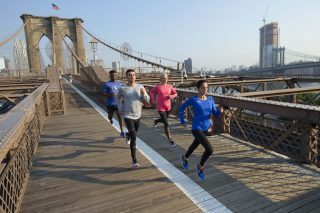
New Balance has unveiled its two new collections for the 2017 TCS New York City Marathon. The apparel, accessories and footwear include both running pieces and lifestyle silhouettes. They are designed for runners, as well as their spectators.
Launching first is the New Balance TCS New York City Marathon Collection. Graphic tees, tanks, half zips, shorts, and performance jackets will be available in a variety of colors, all featuring the famed marathon’s logo. New Balance is even releasing an updated version of their original Marathon Windcheater Jacket. The Windcheater was part of New Balance’s first apparel collection in 1978.
The smaller, limited edition Marathon Capsule Collection will be released on Oct. 18. This launch features premium apparel that takes its inspiration from the city that never sleeps. The apparel and footwear is black with gold embellishments, representing the twinkling lights of New York City. The collection includes tanks, tees and long sleeves with 40 UPF to protect runners from the sun in every season, as well as tights and a winter running jacket.
Four limited edition running shoes will also be available to celebrate the 48th running of the NYC Marathon. New Balance chose a few of their most popular models—860v8, 1400v5, Fresh Foam Zante v3 and Fresh Foam 1080v—and added design elements and logos representing the marathon and New York City. The 860v8, 1400v5, and 1080v7 will become available on Sept. 15. The Fresh Foam Zante v3 will launch with the smaller collection on Oct. 18.
All apparel and footwear will be available at New Balance retailers, the NYRR RunCenter in NYC, at the New York City Marathon expo and newbalance.com.
Take a look at the collection below.
RELATED: The Top Americans Running This Year’s NYC Marathon
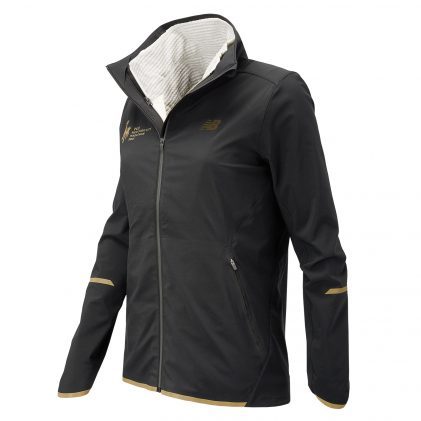

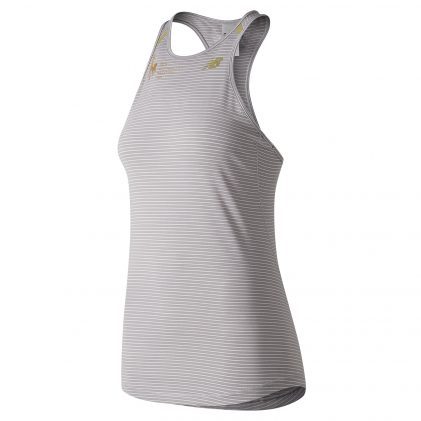
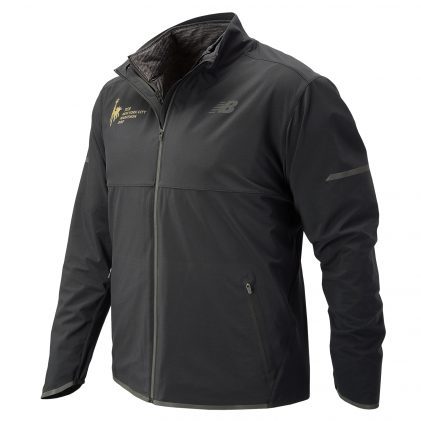
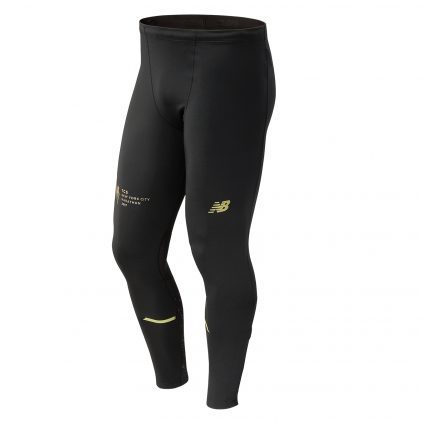

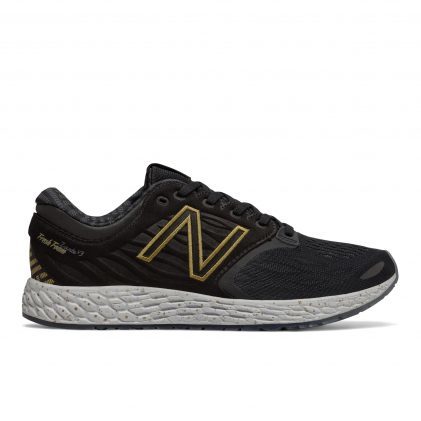
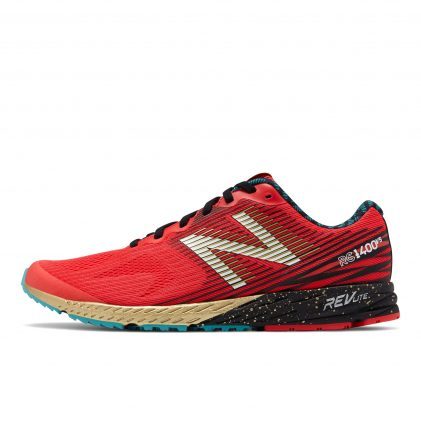
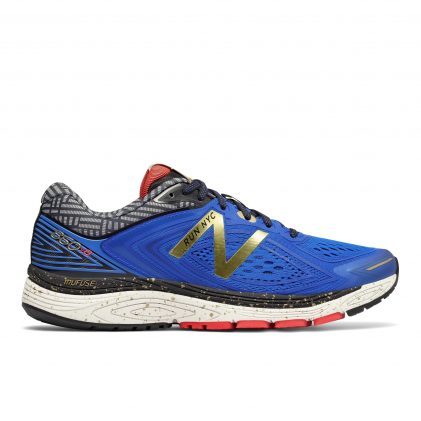
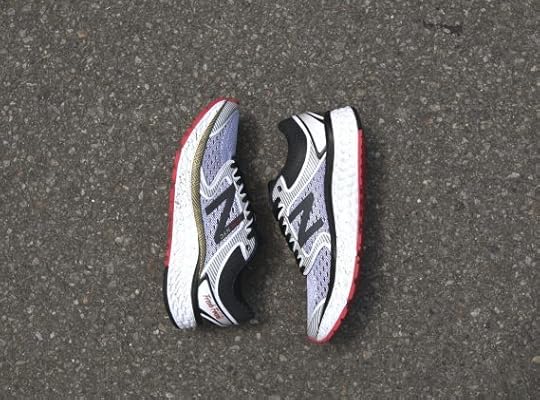
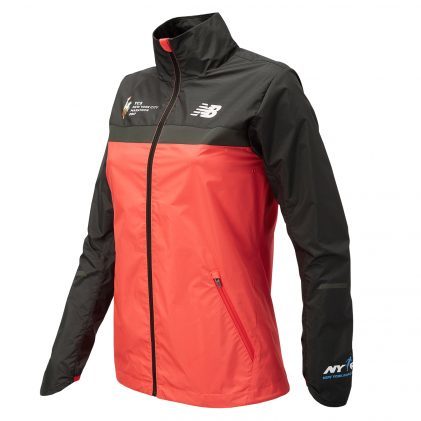
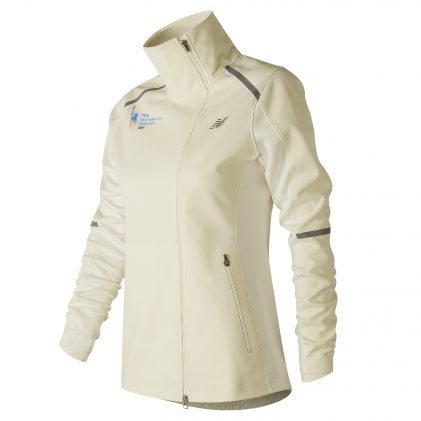
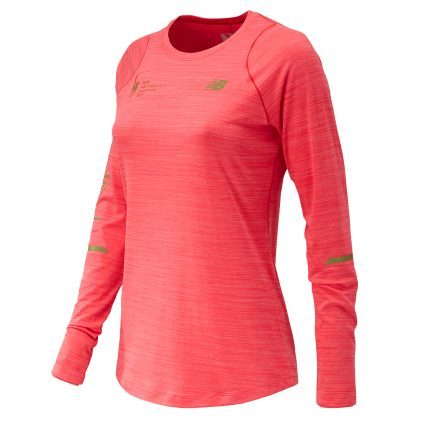

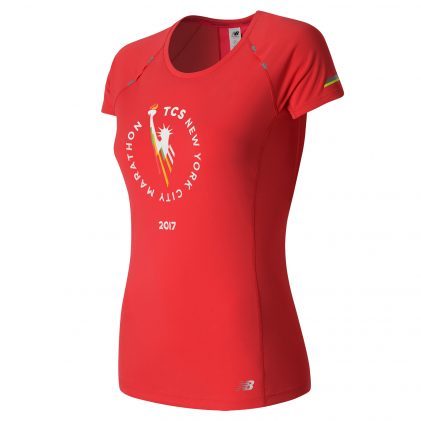
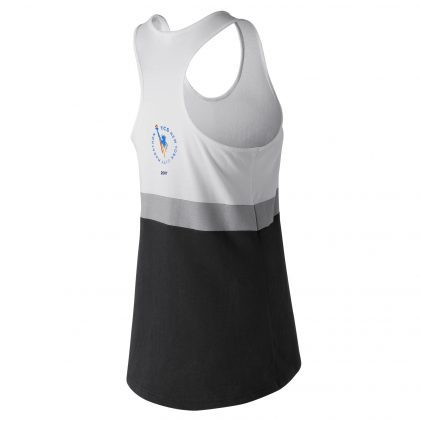
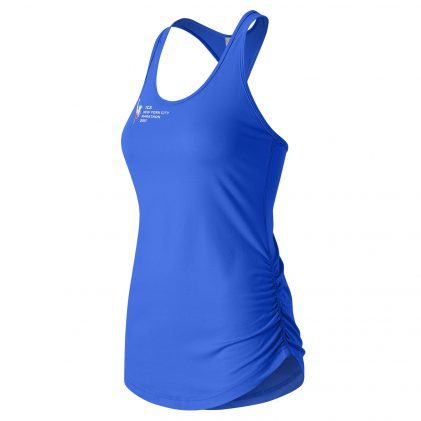
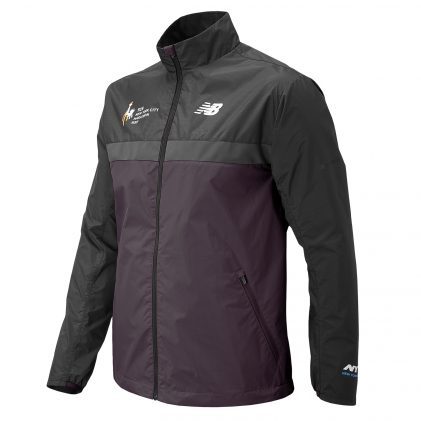
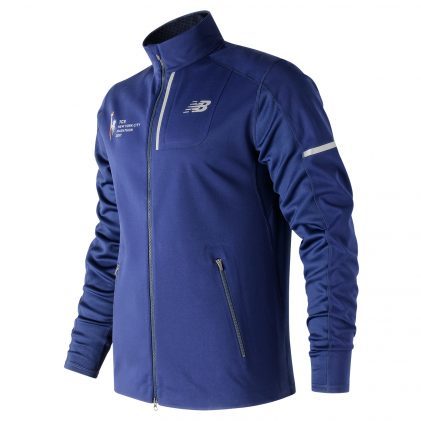
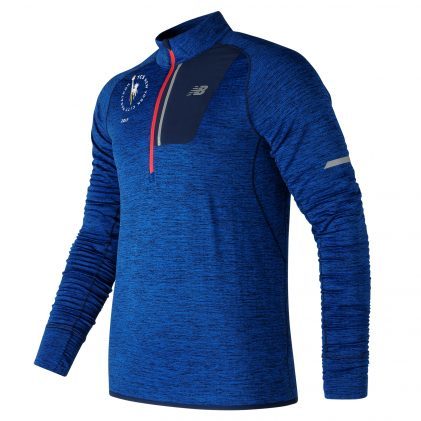

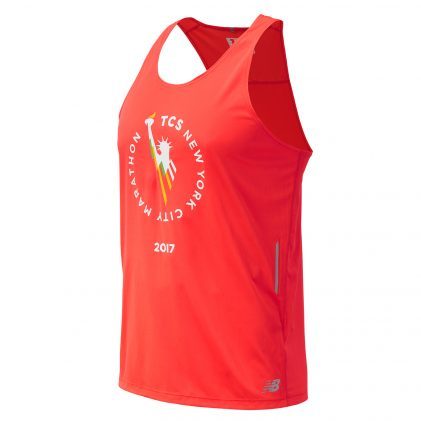
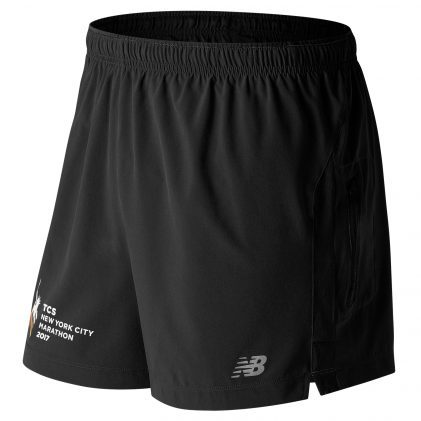
The post A Sneak Peek At New Balance’s 2017 NYC Marathon Shoes And Apparel appeared first on Competitor.com.
Joe McConaughy Shares How He Crushed The Appalachian Trail FKT Record
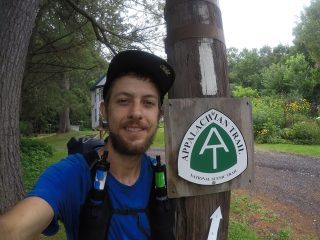
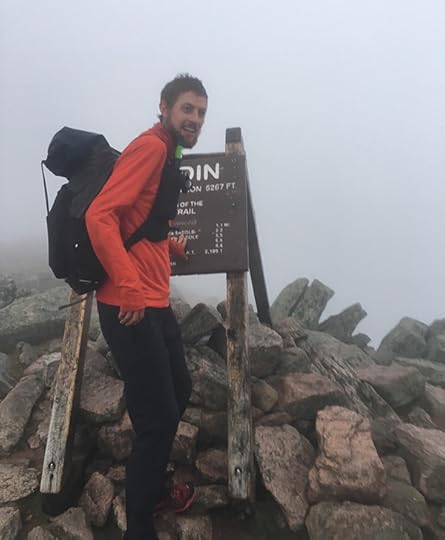
Joe McConaughy at the top of Mt. Katahdin in Maine, which marks the end of the Appalachian Trail.
McConaughy, 26, grew up in Seattle and went on to run track and cross country at Boston College. He then set a record in 2014 for the fastest-known supported time on the Pacific Crest Trail, covering 2,663 miles in 53 days, 6 hours and 37 minutes.
Now he’s set a record for the Appalachian Trail. On Aug. 31, McConaughy reached the end of the 2,189-mile route atop Maine’s Mt. Katahdin in 45 days, 12 hours and 15 minutes. It was not only the fastest self-supported trek, but it also beat the fastest-known completion of the AT by Karl Meltzer in 2016 by 10 hours. McConaughy, an ultrarunner who carried a pack of less than 25 pounds, averaged more than 48 miles per day.
To bag the record he had to run nearly nonstop over the final 36 hours to cover the 110 miles to the finish while dealing with a hamstring injury, swollen legs and a bad ankle.
McConaughy, whose trail name is Stringbean (@thestring.bean on Instagram) lives in Boston and works in sales for the travel company EF College Break. He talked about the experience for Competitor.com.
How does your body feel?
It’s better. It’s a long process. I’ve eaten a lot and sat around a lot. I think I’ve come away from everything without any long-term injuries. I still have numbness on the bottoms of my feet. It will be around another few months or so. I had a really nasty hamstring tendon, tendinitis, and that’s gone away. My ankle was pretty bad but that’s also toned down. I’m eating more than I should. People say I don’t look as gaunt anymore, which is a compliment I think.
Why did you go after the record?
I wanted do the Appalachian Trail because it’s the sister trail of the PCT and I wanted to do it self-supported because the trail lends itself more to being self-supported (with more places along the route to buy food or ship it in advance). It appealed to me in the sense I really do want to be adventurous and challenge myself.
What was your goal?
I thought I could do 43 days. I honestly thought I was going to get pretty close to that until I hit the White Mountains. I got injured, too, that hurt, but I didn’t realize how much the White Mountains would slow me down and how much I would get injured doing them.
Tell us about your big push at the end.
I knew I was going to have essentially two days to run 90 miles, and then I had a bad day and I was like, “I’m going to have two days to run 100 miles.” Then it creeped up to 110 miles (laughs) … I was pushing way harder than I was used to because the trail allowed it and my body, for whatever reason, was agreeing. I had really good energy and made it all the way through. The last day, a couple of times I blinked and my eyes just wanted to stay closed. I was pretty tired. I did bonk toward the middle of the day with like 28 miles left. That was my low point. I had maybe 600 calories and I needed to go about 12 more miles until I’d get to a place where I could get some food. That was daunting—knowing I had a handful of trail mix to get me through another three to four hours of running. But I bounced back. I ate right and hydrated right toward the end. I was dealing with the hamstring and my feet started to hurt a bunch and they started to swell. But I pushed through and I got there.
RELATED: Inside the FKT (Fastest Known Time) Trend
Basically, you didn’t sleep at the end?
It was 37 hours to get to the top and I didn’t take any (long) breaks. I think the longest break I took was when I sat on a log for maybe 15 minutes and rested my head in my hands. That was the only time I almost fell asleep (laughs). All of a sudden I was like, “Whoa, do not fall asleep.”
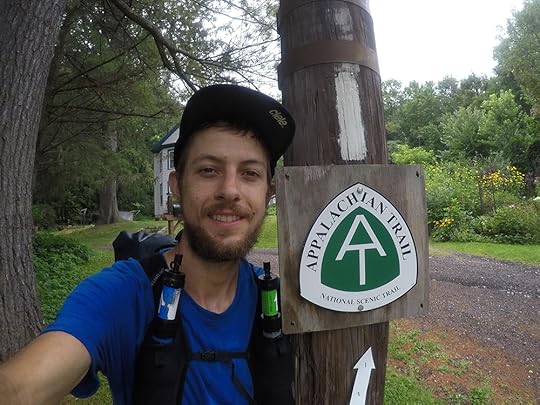
Did you run most of the time? Or was it a combination of hiking and running?
For 45 days I was trying to cover as much ground as I could in any situation on every day. Everything you do, you feel you’re being timed. The longer I take to set up my tent the longer this day is going to take. The longer I take my rest break the less time I’ll have to run. So every day you’re pushing to cover as much distance as you can, so I tried to run as much of it as I could. I tried to run all the flats and all the downhills but some miles uphill, too. But there’s this imaginary threshold. If you go too fast for a period of time your chances of injury are increased, so there were times I’d hold myself back.
I understand you ate about 8,000 calories per day?
Everything hinged around my re-supply boxes, so I packaged around 7,500 to 8,000 per day. In the first two weeks or so that was fine. Later it was more like 9 or 10,000 calories, which I’d get through towns or trail magic, just stuffing my face. My favorite food I had was some peach bread I got from this small sort of boutique farm. I saved it for that night and just devoured it. Some of my favorite snacks were Oreos and Pop-Tarts. I ate so much, especially near the end. Any food was good food.
How do you train for something like this?
Because it’s such a big endeavor people assume you must do some kind of superhuman training to prepare, but honestly, once you get out there for a week or so you get your trail legs under you and it becomes a lot more routine. That said, you have to have a certain physical and mental shape going in. I tried to run everything (in the weeks before) with my backpack, with between 5 and 12 pounds, sometimes more, and doing 100-mile weeks. I also spent two weeks in Canada where I was hiking and running the majority of the day, just to get my body used to that sort of grind. (McConaughy did a short documentary on his training, including two ultra runs)
The injuries, the lack of sleep, the pressure to get the record. Was this fun or was it an ordeal?
I had a blast. I loved it … Now that I finished, I loved it. (laughs) I wouldn’t have told you that all the time on the trail, but you know you can see some incredible things and meet really interesting people. You see a lot of small-town America you wouldn’t see otherwise. You’re constantly pushing yourself physically and pushing yourself to do something impossible for that day. I find a lot of peace in being able to say I did everything I could on that day and being proud of that. If you ask if you had fun, it may not necessarily be fun when my knee’s swelling and hurt, but when I think about it, it is something I’m proud of and enjoyed.
What about other long-distance goals?
Definitely there are some shorter trails (records) I’d like to go after. Ones that have intrigued me are the Long Trail in Vermont, the Wonderland Trail (in Washington), the John Muir Trail in California, the Colorado Trail. Those are on my radar. But what’s actually first on my list, I always do a few indoor track races. So I want to do the indoor mile. I definitely need a full month of recovery before I start thinking about that.
Will you do the other long “grand slam” trail, the Continental Divide Trail?
I talked with my girlfriend about maybe hiking that one day. I would love to go over it, but I don’t have any plans to do it for speed (laughs). I’ll do it the way normal people do it.
The post Joe McConaughy Shares How He Crushed The Appalachian Trail FKT Record appeared first on Competitor.com.
Do These 5 Moves Weekly To Strengthen Your Feet
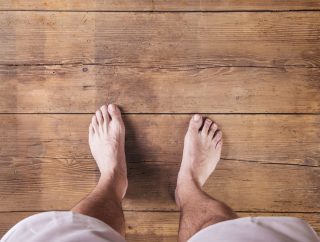
Running shoes are the one thing every runner talks about needing, but they probably aren’t helping your foot strength and mobility. With tougher tootsies, you’ll find that you have a more powerful foundation for logging miles. Also trail terrain will seem less unstable and stabby.
RELATED: How To Loosen Your Feet With A Golf Ball
To help improve toe and foot strength and mobility, we turned to Danny Mackey, coach and manager of the Brooks Beasts Track Club. The former elite runner, who has a master’s in exercise physiology and biomechanics, says there are five areas of focus for the middle-distance runners he coaches: strength, speed, stamina, coordination and suppleness (or flexibility).
The following five foot exercises contribute to all of these. Mackey says, “Some of the strength issues athletes have is due to being overly supported in shoes so we want to reverse engineer this issue.”
RELATED: Got Insoles? 15 Products To Protect Your Feet.
Do all of these exercises barefoot, 3–4 days a week before running.
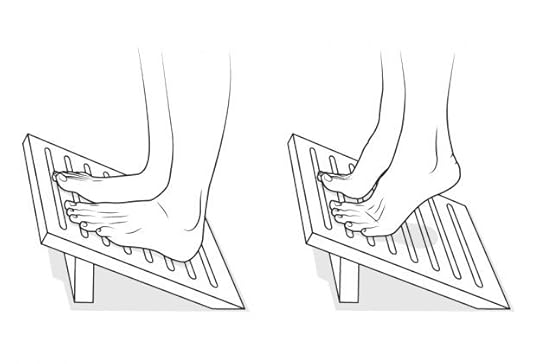
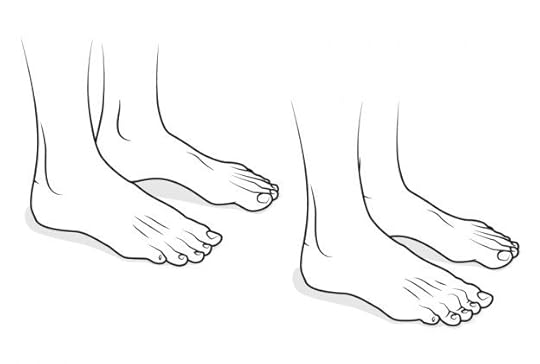

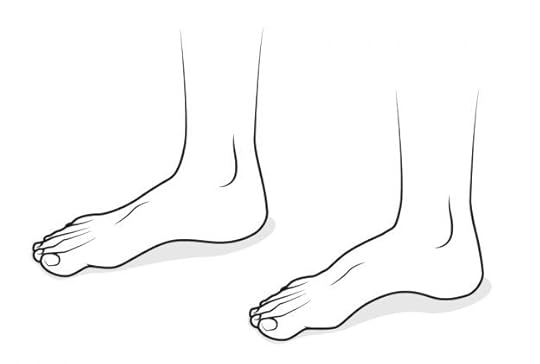
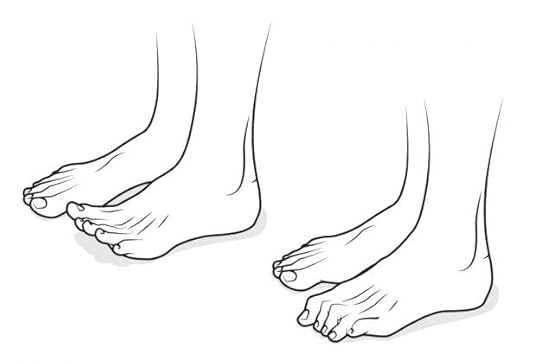
The post Do These 5 Moves Weekly To Strengthen Your Feet appeared first on Competitor.com.
September 12, 2017
Inside the Chicago Marathon Med Tent With Medical Director George Chiampas

Photo: Courtesy of Chicago Marathon
While runners at the Bank of America Chicago Marathon on Oct. 8 worry about their pre-race rituals and mile times, Dr. George Chiampas will be focused on making sure all 40,000 competitors go home healthy. As the race’s medical director, Chiampas, 46, leads a team of 1,500 medical professionals and volunteers that spring into action to help sick and hurting competitors during the Chicago Marathon. From minor muscle strains to serious heat-related illnesses, they are prepared to deal with it all. At the 2016 marathon, Chiampas and his crew treated an estimated 2,000 runners. A Chicago native, Chiampas first got involved with the race as a volunteer when he was in medical school. He continued to volunteer when he was emergency medicine resident before becoming the race’s medical director in 2007. Competitor caught up with the busy physician to chat about marathoner maladies, his toughest year as director and his advice to runners on race day.
What was your most challenging year and why?
“The 2007 race was challenging due to the extreme weather and the concern for runners and the public. The humidity is a component which is extremely difficult to overcome, especially with thousands of runners and the marathon distance. The decision to cancel and stop the event was one made in the interests of our runners, volunteers and public.”
(On Oct. 7, 2007, high heat and humidity during the marathon caused scores of runners to develop heat-related illnesses. In addition, runners encountered chaos at aid stations, where they were told there was no water left, according to news reports. Race officials, including Chiampas, decided to halt the event as the temperature soared into the high 80s. At the end of the day, one runner died and more than 300 others received medical attention.)
“While it was a decision that was difficult, we absolutely knew it was the right decision. We initially received quite a bit of criticism, however as time has passed, our decision, as well as how we responded collectively—from medical and public safety—has highlighted our event as a key leader and model for marathons globally.”
What are your biggest concerns as medical director as this marathon approaches?
“Weather is a key piece and a constant factor that determines our overall needs and how busy we might be as a medical team. I am constantly cognizant of ensuring areas across the course are prepared and no potential incident hasn’t been thought through. We have so many moving pieces and these keep me up at night sometimes.”
RELATED: Americans Hasay And Rupp Will Race Chicago Marathon
Supplies. What kinds of medical supplies do you need to be stocked up on for the event?
“We staff our medical tents to address minor issues to very severe cases. We have thousands of gauze, IV fluids, wraps, lubricants, Band-Aids, tape and countless other medical supplies across the course. Finally, we have critical care equipment in key areas for severe cases and work collaboratively with Superior Ambulance and our private EMS services, as well as the Chicago Fire Department.”
What are the common health problems you see among marathoners both during the race and immediately after?
“Musculoskeletal issues tend to be the most common injuries we see on race day such as strains, or overuse type injuries. We also see quite a few skin or blister type injuries, which we address immediately to allow the runners drive through the 26.2 miles.
“Some of the more serious matters, and the ones where most fans or spectators rarely see, are runners experiencing significant heat-related matters, such as heat stroke, which requires a rapid diagnosis and immediate on-site response.
“Other issues such as hyponatremia where runners consume large amounts of water while dropping their blood salt content is (also) a very serious matter which we occasionally see and need to address immediately.
Cardiac incidents are rare, (but) having over 45,000 runners with their own unique medical conditions we do see, at times, a runner experience a significant cardiac event on race day. For all of these reasons, we have established key algorithms specific to the medical conditions seen in endurance events and have developed educational programs for all of our medical volunteers. We additionally offer CPR training to all runners and all 12,000-plus volunteers.”
What advice would you give runners on how they can avoid the medical tent?
“First and foremost, each runner has to run their individual race based on how their training has led up to race day and if they have any limitations, they should adhere to them.
“Second, adjust based on the weather forecast, meaning if it’s unusually warm, set realistic expectations and be prepared to adjust. Stick to your own hydration and nutrition plan—this is not the time to try something new or experiment.
Finally, listen to any new aches or pains and address them prior to race day. On race day, if any worsening issues or new injuries or symptoms arise, please stop and have our medical staff work with you in reaching that goal of completing the race.”
RELATED: Chicago Marathon Welcomes Back 5 Legendary Runners
The post Inside the Chicago Marathon Med Tent With Medical Director George Chiampas appeared first on Competitor.com.
KT Tape Celebrates Meb’s Career With 5K Run And Limited Edition Tape
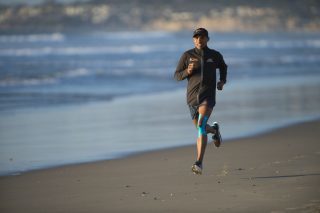
Photo: KT Tape
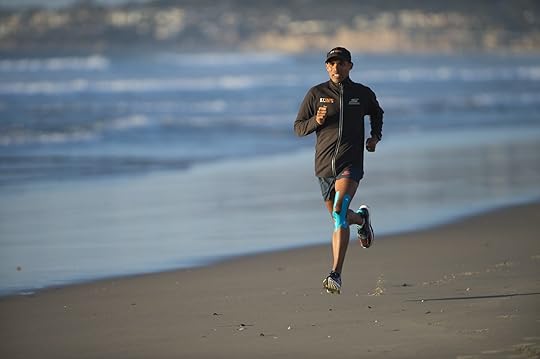
Calling all San Diego runners—you have the chance to run a 5K with Meb today!
KT Tape is celebrating Meb Keflezighi’s illustrious career with a community run in his hometown, as well as a limited edition tape collection.
Local San Diego athletes are invited to a 5K training run on Tuesday, September 12th at 4 p.m. PST. The run takes place at the Spreckles Organ Pavilion in Balboa Park. During the 5K, Keflezighi will be chatting about training tips, advice and running inspiration. All participants will have the opportunity to try out KT Tape before, during and after their run.
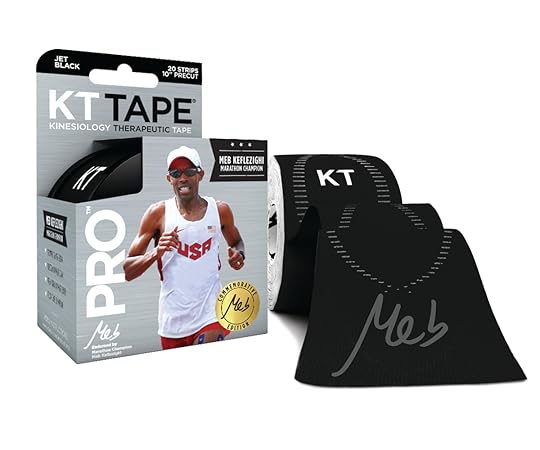
The limited edition KT Tape PRO Meb tape will also be unveiled. The tape design commemorates the many achievements during the course of his career. A portion of the proceeds from the sale of each box will go to the MEB Foundation. The tape will be available through the New York City Marathon, which is Keflezighi’s last professional race and his 26th marathon.
Details about the run are below.
Location: Spreckles Organ Pavilion
Balboa Park
2125 Pan American Rd E
San Diego, CA 92101
3:30 pm – Runners arrive
4:00 pm – Run begins
4:45 pm – Run concludes
RELATED: The Top Americans Running This Year’s NYC Marathon
The post KT Tape Celebrates Meb’s Career With 5K Run And Limited Edition Tape appeared first on Competitor.com.
Ryan Hall's Blog
- Ryan Hall's profile
- 21 followers



